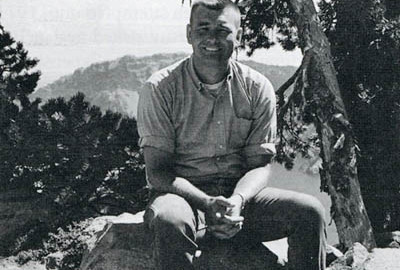In 1982 through most of ’84 I was working as a part time employee. My responsibility was to establish a limnological monitoring and research program at Crater Lake. This involved setting up a laboratory, buying equipment, training people, going to meetings, being sort of an all around limnologist. In addition to all that, I was doing research on the lake. I did a lot more than ten percent of the time. I probably spent a lot of my own time trying to get it all done — writing reports and seeing that all the work got done. This was fine and I certainly liked what I was doing. Things went well until a meeting held in Seattle in the fall of ’82. Let me first go back to January ’82. At that point we had a meeting in Corvallis attended by a number of scientists from OSU and elsewhere. We talked about a legitimate program for the park and about the possibility of optical changes in the lake and so forth. This was discussed in that day-long meeting, and led to me being hired as a part-time employee.
The shit began to hit the fan here at a meeting in Seattle that fall. I can still vividly remember that meeting, with Jim Larson in charge. His right-hand person was Shirley Clark, and both of them were uneasy with any discussions about sewage and optical loss, but particularly sewage. I can understand the uneasiness about sewage. Probably a 1,000 people, park visitors and staff, were stricken with waterborne illnesses at Crater Lake in 1975. It was initially attributed to food poisoning, but turned out to be sewage in the park’s water supply.
Munson Spring.
Yes, Munson Spring. I wasn’t there at the time but it seemed like it was during the summer of ’75. I was in Portland at the time and remember listening to this on the radio. I believe it closed the park. They stationed National Guard troops at the entry to insure that no one would get in until they found the source of the problem. A lot of people were stricken up there, but didn’t really get ill until after spending a day there and then leaving. They [The Center for Disease Control] estimated that there were a thousand cases based on research afterward. There were a lot of lawsuits and the Park Service staff was chastised, with more than a few people transferred out of the park. Their careers were probably damaged as a result. So the word sewage at Crater Lake was really dynamite.
I sensed from Jim Larson and Shirley Clark and other Park Service people in the upper echelons that they were involved in damage control. Either that or they had a siege mentality. There was an unwillingness to admit that there was a problem is what I observed. In fact there was outright denial. There was a lot of skepticism expressed in the early meetings since a good scientist is always skeptical of any kind of conclusion or finding at first. Unless you have a sufficient pile of data to back your statement, you should be skeptical of that claim. Yet, no one was willing to take action to see if it were true.


